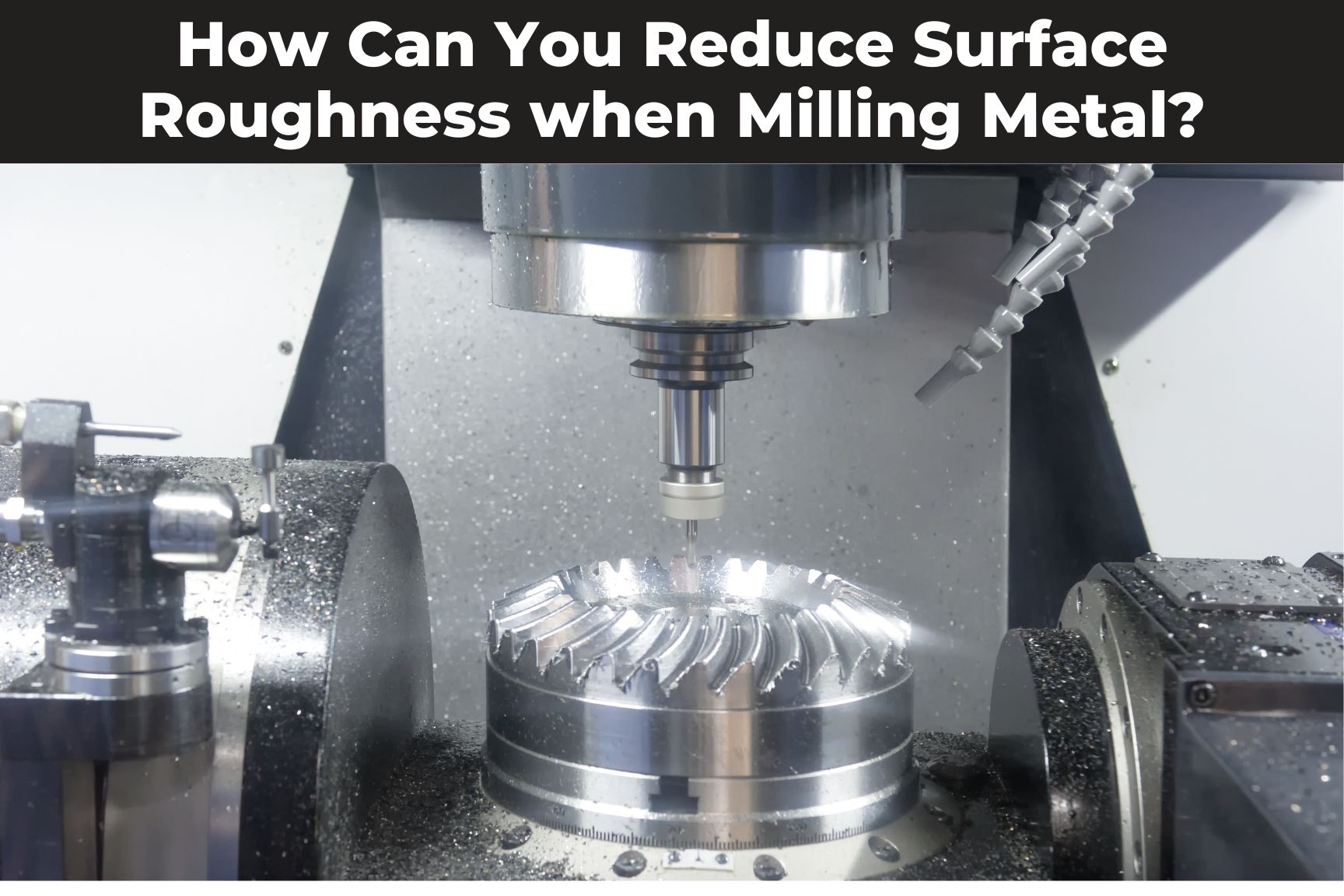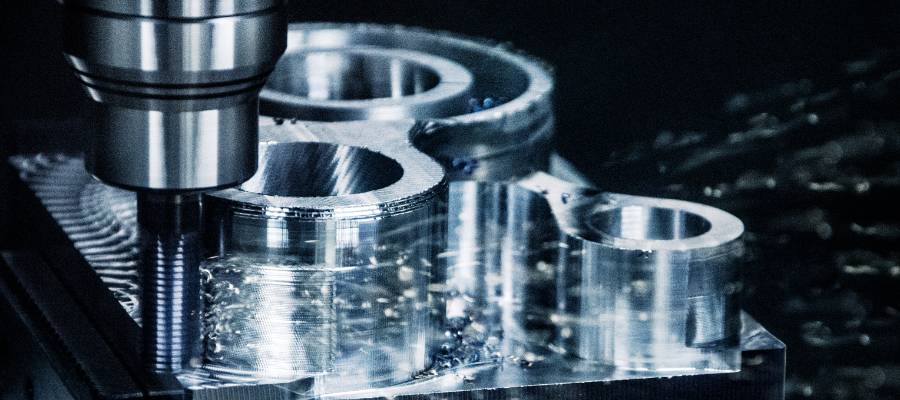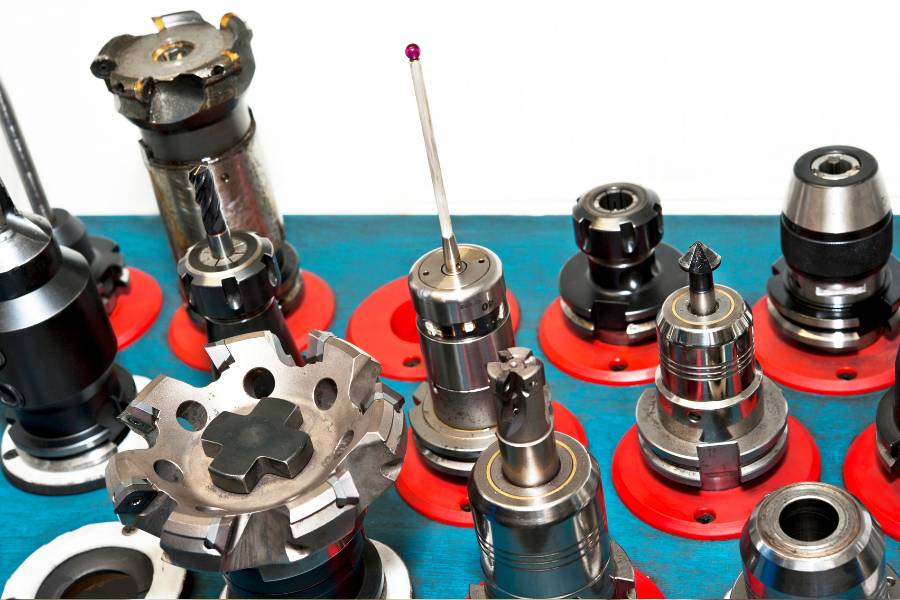
Milling is a common machining process used to produce parts with precise dimensions and shapes. However, one of the challenges of milling is maintaining a smooth surface finish on the final product.
Surface roughness is an important factor to consider when choosing the materials and types of machines used in metal working, as it can affect the overall quality and functionality of a product. A rough surface can result in decreased performance, poor aesthetics, and even safety issues. Therefore, it is important to try and reduce surface roughness as much as possible during the milling process.
There are several ways to reduce surface roughness in milling, which can be broken down into a few main categories: reducing feed rate, eliminating the formation of built-up edges (BUEs), reducing tool wear, reducing vibration, using the correct technique, using different tools for rough and finish passes, and increasing speed. When these factors are taken into consideration, the users can be able to get the benefits of CNC Milling for their production.
Reducing feed rate:
One of the main factors that can affect surface roughness is the feed rate, or the speed at which the tool moves through the material. If the feed rate is too high, it can cause the tool to skip or bounce, resulting in a rough finish. On the other hand, if the feed rate is too low, it can result in excessive tool wear and longer milling times. To reduce surface roughness, it is important to find the optimal feed rate for your specific milling setup. This may require some trial and error, but it can greatly improve the surface finish of your final product.
Eliminating chances of BUE formation:

Built-up edges (BUEs) are layers of material that can accumulate on the cutting edge of the tool during the milling process. BUEs can cause the tool to cut in an uneven or unpredictable manner, resulting in a rough surface finish. To reduce the chances of BUE formation, it is important to use a tool with a sharp, clean cutting edge and to periodically clean or replace the tool as needed. Additionally, using a coolant or lubricant during the milling process can help to prevent BUEs from forming.
Reducing tool wear rate:
Tool wear is another factor that can affect surface roughness in milling. As the tool wears down, it becomes less effective at cutting and can produce a rough finish. To reduce tool wear and improve surface roughness, it is important to use a tool that is made from a durable material and to properly maintain the tool by sharpening or replacing it as needed. Additionally, using a tool with a coating or substrate that is resistant to wear can help to extend the life of the tool and improve surface finish.
Reducing vibration:
Vibration during the milling process can also contribute to surface roughness. Vibration can be caused by a variety of factors, including the tool, the machine, and the workpiece. To reduce vibration and improve surface roughness, it is important to use a tool with a balanced design and to properly secure the workpiece to the machine. Additionally, using a machine with good damping characteristics can help to reduce vibration and improve surface finish.
Using the correct technique:
Another key factor in reducing surface roughness is using the correct milling technique. This includes selecting the appropriate tool and feed rate for the material being milled, as well as using the correct cutting direction and tool path. It is also important to use a consistent and controlled cutting motion to ensure a smooth finish.
Using different tools for rough and finish passes:

In some cases, it may be necessary to use different tools for rough and finish passes in order to achieve the desired surface roughness. For example, a roughing tool with a larger diameter and more aggressive cutting edge may be used for the initial pass, followed by a finishing tool with a smaller diameter and a finer cutting edge for the final pass, such as tungsten carbide burrs. This can help to reduce tool wear and improve surface roughness.
Use a more rigid machine:
A more rigid machine will produce less vibration during the milling process, leading to a smoother finish. Investing in a more rigid machine may be a worthwhile investment in the long run, as it can improve overall efficiency and reduce the need for rework.
Use a softer material:
Softer materials are often easier to machine and can result in a smoother finish. However, it is important to consider the trade-offs between the properties of the finished product and the ease of machining when selecting the material.
In addition to these steps, it is essential to follow proper machining techniques and safety protocols while milling to ensure a smooth and accurate surface finish. This includes using appropriate personal protective equipment, following proper cutting tool handling procedures, and adhering to the manufacturer's instructions for the milling machine.
In conclusion, surface roughness is an important factor to consider when milling parts and can affect the overall quality and functionality of a product. There are several ways to reduce surface roughness in milling, including reducing feed rate, eliminating the formation of built-up edges (BUEs), reducing tool wear, reducing vibration, using the correct technique, using different tools for rough and finish passes, and increasing speed. By considering these factors and implementing best practices such as using sharp, clean tools and maintaining a consistent and controlled cutting motion, it is possible to achieve a smooth surface finish in milling operations. By doing so, you can improve the performance, aesthetics, and safety of your final products.
